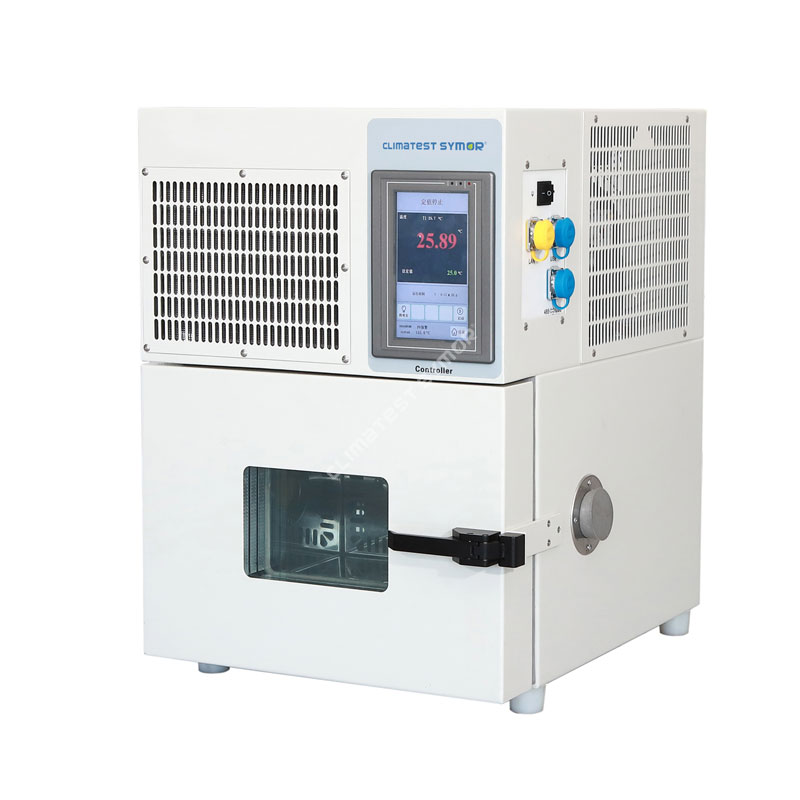Understanding the Importance of Environmental Test Chambers
2025-03-26
In the world of product development, durability and reliability are key factors that determine the success of a product in the market. Whether it’s electronics, automotive parts, or pharmaceuticals, products must be able to withstand various environmental conditions that they will encounter during their lifespan. This is where environmental test chambers come into play. These chambers simulate extreme conditions like temperature fluctuations, humidity, and even pressure to test how well products perform under stress. In this blog, we will delve into what environmental test chambers are, their uses, and why they are essential for industries aiming for high-quality and durable products.
What is an Environmental Test Chamber?
An environmental test chamber is a controlled space used to simulate various environmental conditions such as temperature, humidity, altitude, and sometimes even light exposure or vibration. These chambers are designed to test how products or materials react to different environments in order to predict their performance in real-world conditions.
The chambers are equipped with the necessary systems to control and maintain precise temperature and humidity levels, while some also offer the ability to simulate specific environmental stresses, such as rapid changes in temperature (thermal cycling) or exposure to salt fog for corrosion testing. Depending on the type, environmental test chambers can range from small, tabletop units to large rooms capable of testing large products like automotive parts or industrial machinery.
Types of Environmental Test Chambers
1. Temperature and Humidity Chambers
These are some of the most commonly used environmental test chambers. They simulate extreme temperature and humidity conditions to assess how products behave under these stresses. For example, a smartphone might be tested in a chamber that fluctuates between high heat and cold to mimic how the device will function when exposed to harsh weather conditions.
2. Thermal Shock Chambers
Thermal shock chambers are designed to expose products to rapid temperature changes. Products might be subjected to extremely high temperatures followed by extremely low temperatures, or vice versa, in a very short period. This helps evaluate the product’s ability to handle extreme temperature variations, such as those found in outdoor environments or in industrial applications.
3. Altitude Chambers
Altitude chambers simulate high-altitude environments by adjusting the pressure inside the chamber. This is particularly useful for testing products that are likely to be used in high-altitude locations, such as aviation equipment or consumer products meant for outdoor activities in mountainous regions. These chambers help assess how the products perform under low-pressure conditions.
4. Vibration and Shock Chambers
These chambers simulate the mechanical stresses and vibrations that a product may experience during transport or in real-world use. For example, an automotive part might be tested for vibration resistance to ensure it holds up when the vehicle is in motion. These tests help manufacturers assess the durability and integrity of their products under dynamic conditions.
5. Corrosion Chambers
Corrosion chambers are used to simulate conditions that could lead to corrosion in a product, such as exposure to salt, humidity, or other environmental factors that may cause rusting or degradation. These are especially important in industries like automotive, aerospace, and electronics, where long-lasting and corrosion-resistant materials are essential.
The Role of Environmental Test Chambers in Product Development
1. Ensuring Quality and Durability
One of the primary purposes of using an environmental test chamber is to ensure that products can withstand a variety of environmental conditions over time. Manufacturers can test their products in a controlled setting, exposing them to stressors that they would otherwise encounter in real-life scenarios. This allows for a thorough evaluation of the product’s durability and helps identify potential weaknesses before they reach consumers.
2. Regulatory Compliance
In many industries, especially those involving electronics, automotive, or pharmaceuticals, products must meet strict regulatory standards to ensure their safety and reliability. Environmental test chambers are an essential tool for manufacturers to verify that their products comply with these standards. Whether it’s for temperature tolerance, humidity resistance, or corrosion prevention, these chambers provide the testing ground necessary for regulatory certification.
3. Product Improvement
Environmental testing can provide valuable feedback on how products perform under stress, revealing areas for improvement. If a product fails in certain conditions—such as cracking under extreme temperatures or losing functionality in high humidity—it can be redesigned or improved before going to market. This process helps manufacturers ensure that only the best products reach consumers.
4. Long-Term Reliability Testing
One of the challenges in product development is predicting how a product will perform over its lifetime. Environmental test chambers allow for accelerated life testing, where products are exposed to simulated stressors for extended periods to observe their long-term durability. This is particularly important for industries where safety and reliability are critical, such as aerospace, automotive, and healthcare.
Industries That Benefit from Environmental Test Chambers
1. Electronics and Electrical Equipment
In the electronics industry, products such as smartphones, laptops, and other consumer devices need to be tested for extreme temperature changes, humidity levels, and electrical performance under various environmental conditions. Environmental test chambers are essential for ensuring that these products are safe, reliable, and durable under all circumstances.
2. Automotive Industry
The automotive industry uses environmental test chambers to simulate the harsh conditions that vehicles and their components may face during their operation. This includes high temperatures, extreme cold, humidity, and even salt fog to test for corrosion. Automotive parts such as engines, batteries, and electronic systems are rigorously tested to ensure their longevity and functionality.
3. Aerospace Industry
Aerospace components must meet the highest standards of performance because they operate in extremely demanding conditions. Environmental test chambers simulate high-altitude, low-pressure environments and extreme temperature ranges, helping to assess how aircraft and spacecraft will function in outer space or during flight.
4. Pharmaceutical and Medical Devices
For pharmaceutical products and medical devices, it is critical to ensure that they maintain their integrity and effectiveness under varying environmental conditions. Environmental test chambers help test the stability and reliability of these products, ensuring they remain safe and effective for use in real-world settings.
5. Renewable Energy and Energy Storage
Environmental test chambers are also used in the testing of renewable energy systems, such as solar panels and wind turbines, as well as energy storage devices like batteries. These products must be able to withstand extreme weather conditions, such as high heat, humidity, and temperature fluctuations, to ensure their longevity and performance.
Conclusion
Environmental test chambers play a crucial role in product development by providing a controlled environment to simulate real-world conditions. These tests help manufacturers ensure that their products are durable, reliable, and compliant with industry standards. From electronics to automotive parts, aerospace to pharmaceuticals, environmental test chambers are indispensable tools that allow industries to push the boundaries of innovation while ensuring safety and quality. With technological advancements and growing demands for high-performance products, the role of environmental test chambers will only continue to grow in importance, ensuring that the products we rely on daily can withstand the challenges of the environment.



